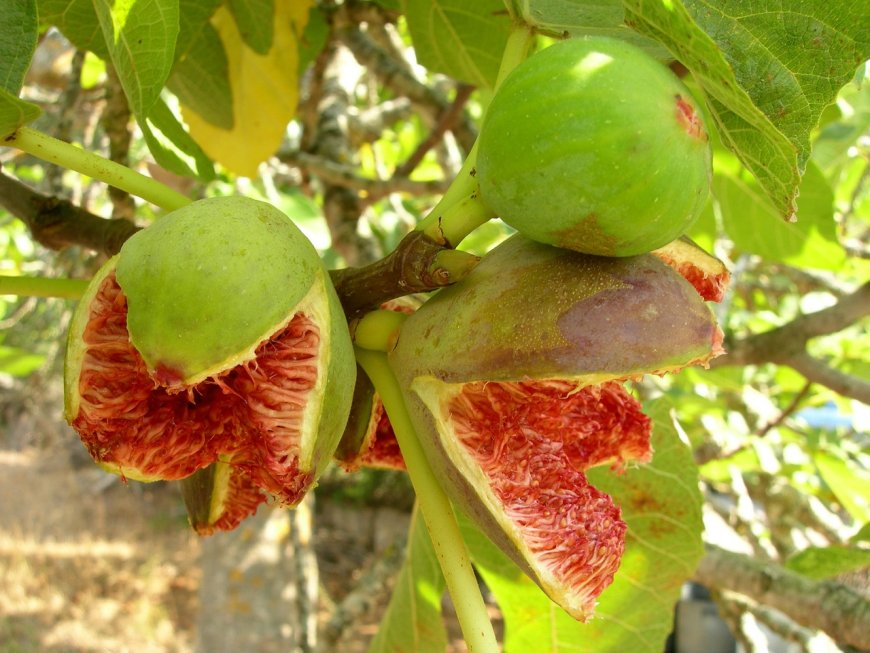The Disappointing Tale of Adriatic JH: A Fig Variety Unsuitable for South Florida's Climate
Discover the Adriatic JH, a fig variety that faced disappointment in South Florida's rain and humidity. Learn about its growth, appearance, taste, caprification, and the challenges it encountered. Explore the Adriatic JH fig variety's journey in South Florida, where rain and humidity posed significant challenges. Read about its growth, appearance, and taste experience, including caprification by the fig wasp.

In the quest to explore different fig varieties that thrive in South Florida's tropical climate, I recently had the opportunity to grow and taste the Adriatic JH fig variety. While fig enthusiasts around the world may praise its unique characteristics, my experience with this particular fig left me yearning for more. In this blog post, I'll share my firsthand account of growing, tasting, and ultimately being disappointed by the Adriatic JH.
The Adriatic JH fig tree is undoubtedly a beauty to behold. Its large, broad leaves provide ample shade, and the tree itself grows vigorously, reaching impressive heights. The figs themselves are visually appealing, boasting a golden-yellow hue when ripe and a slightly elongated shape. The skin is smooth and delicate, adding to the anticipation of the taste that lies beneath.
At first glance, the Adriatic JH figs held much promise. I eagerly plucked a perfectly ripe fruit and allowed its aroma to entice me. The initial bite revealed a soft and tender flesh with a honey-like sweetness, intermingled with subtle notes of melon. However, it was the fig's sensitivity to the South Florida climate that marred the overall experience.
South Florida's humidity and frequent rainfall proved to be the Achilles' heel of the Adriatic JH fig variety. Despite my best efforts to protect the tree from excessive moisture, the figs became increasingly prone to spoilage. Their delicate skin failed to withstand the humidity, rendering them mushy and unappetizing. Even the slightest rain shower was enough to compromise the figs' integrity, leaving me disheartened.
A friend named Brian Melton of ProFig kindly sent me a batch of caprified Adriatic JH figs, offering me a taste of the deliciousness that lay just beyond my reach. As I unwrapped the carefully packaged figs, their sweet and earthy aroma instantly permeated the air. The figs themselves were a sight to behold, with their slightly shriveled appearance indicating the transformative work of the fig wasp. Intriguing, dark spots dotted their skin, serving as a reminder of the intricate partnership between the fig and its minuscule pollinator.
Anticipation filled the air as I gingerly plucked a caprified Adriatic JH fig from the bunch. Its texture was noticeably firmer compared to its non-caprified counterparts, showcasing the transformation brought about by the fig wasp's pollination efforts. The fig felt velvety in my hands, its tender skin yielding slightly under gentle pressure.
With a flick of the knife, I exposed the fig's luscious crimson interior, revealing a tapestry of seeds enrobed in a honey-like syrup. The moment of truth had arrived. As the first bite met my palate, an explosion of flavors unfolded—a perfect harmony of sweetness and complexity. The fig's natural sweetness was heightened by the caprification process, resulting in a taste that bordered on sublime. Juicy and succulent, each bite was a reminder of what the Adriatic JH figs could have been had they thrived in South Florida's climate.
Alas, as I savored the exquisite flavor of Brian's caprified Adriatic JH figs, I couldn't help but lament their absence from my own harvest. The tantalizing taste only served to accentuate the disappointment of my failed attempts to replicate such perfection on my own fig tree. It was a bittersweet experience, one that left me longing for a fruitful fig harvest in the sultry embrace of South Florida's tropical climate.
In conclusion, while caprification held the promise of enhancing the Adriatic JH fig variety, it remained an unattainable dream in my South Florida garden. The tantalizing taste of Brian's caprified figs served as a bitter reminder of the missed potential and a wistful yearning for the fig variety's true glory. Perhaps one day, through further experimentation or the discovery of a more suitable variety, I will experience the joy of caprified figs in my own backyard. Until then, I can only cherish the memory of that fleeting taste of fig perfection and hope for future success in my fig-growing endeavors.








